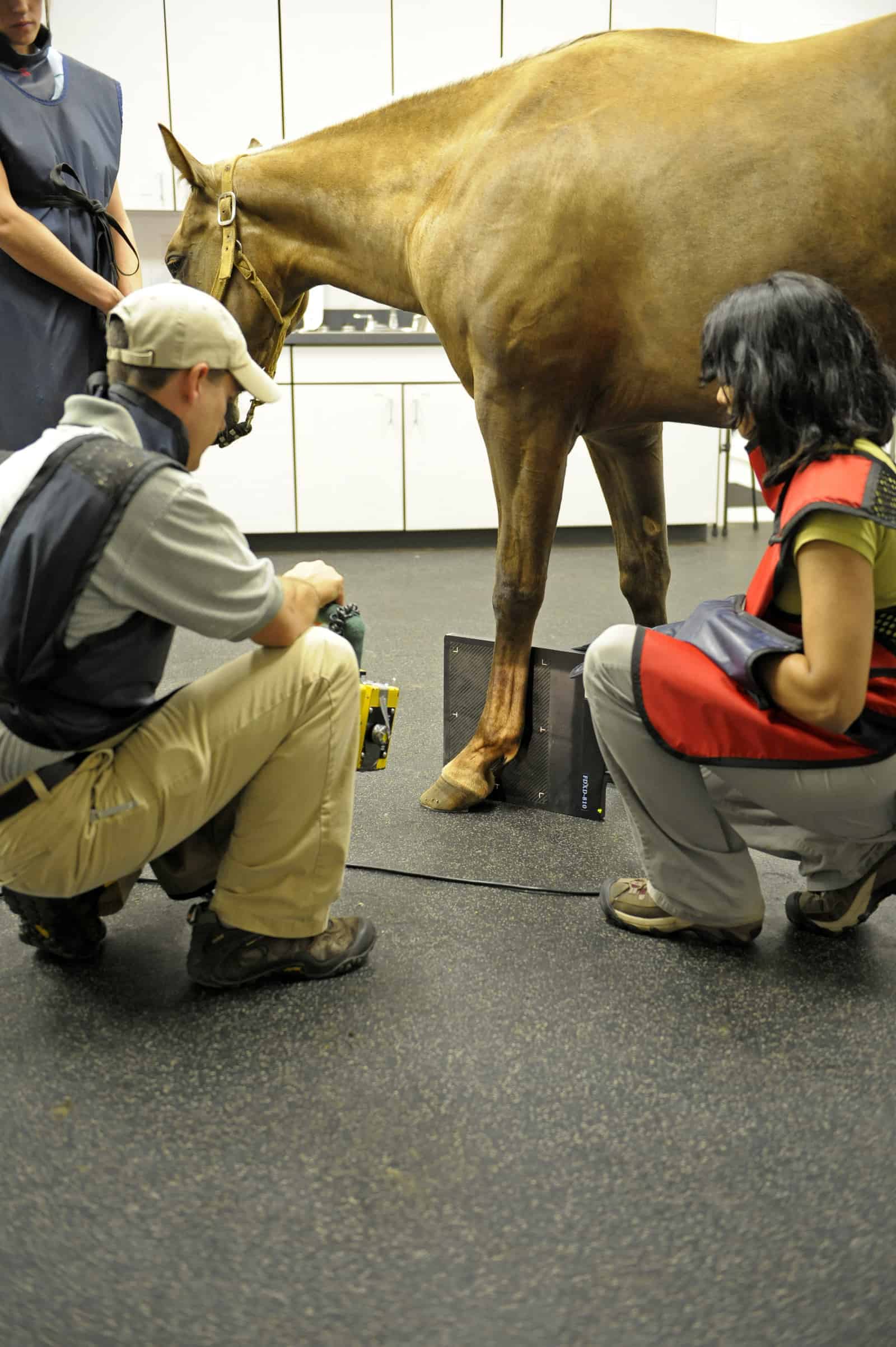Recovering from Sesamoiditis

Q.Two weeks after my sister bought a 10-year-old gelding, he started head-bobbing at the trot. Many veterinary exams, farrier visits, and six months later, we found sesamoid problems on both forelimbs. Can the sesamoid bones be removed? The veterinarian said his tendons are putting pressure on the sesamoid bones, which is resulting in small fractures and weakening the tendons (eventually, they will be severed). The rear of the fetlocks have been blistered several times (the vet said this increases circulation and promotes healing), then hyaluronic acid injections were given in both front legs. We also changed his shoeing, added a pad, and brought the breakover back toward the heel. The horse didn’t limp for a couple of days, but now it’s worse than ever. He’s a quality horse and we really want to help him. Any suggestions?
—Marian Gregor, Chelsea, Michigan
A.The proximal sesamoid bones in the horse are two small bones sitting at the base of the cannon bone in back of the fetlock joint. They are critical components of the suspensory apparatus that supports the horse’s distal limb. The suspensory ligament originates from the bottom of the carpus (knee) or tarsus (hock) and runs down the back of the cannon bone, attaching to the top of the proximal sesamoid bones. The distal sesamoidean ligaments originate from the bottom of the proximal sesamoid bones and run down the back of the pastern, attaching at the back of the long and short pastern bones. The suspensory ligament, proximal sesamoid bones, and distal sesamoidean ligaments make up the suspensory apparatus of the fetlock joint and work together to prevent overextension of this joint when the limb is fully weight-bearing. Because the proximal sesamoid bones are integral in the suspensory apparatus of the distal limb, they cannot be successfully removed
Create a free account with TheHorse.com to view this content.
TheHorse.com is home to thousands of free articles about horse health care. In order to access some of our exclusive free content, you must be signed into TheHorse.com.
Start your free account today!
Already have an account?
and continue reading.
Written by:
Multiple Authors
Related Articles
Stay on top of the most recent Horse Health news with















